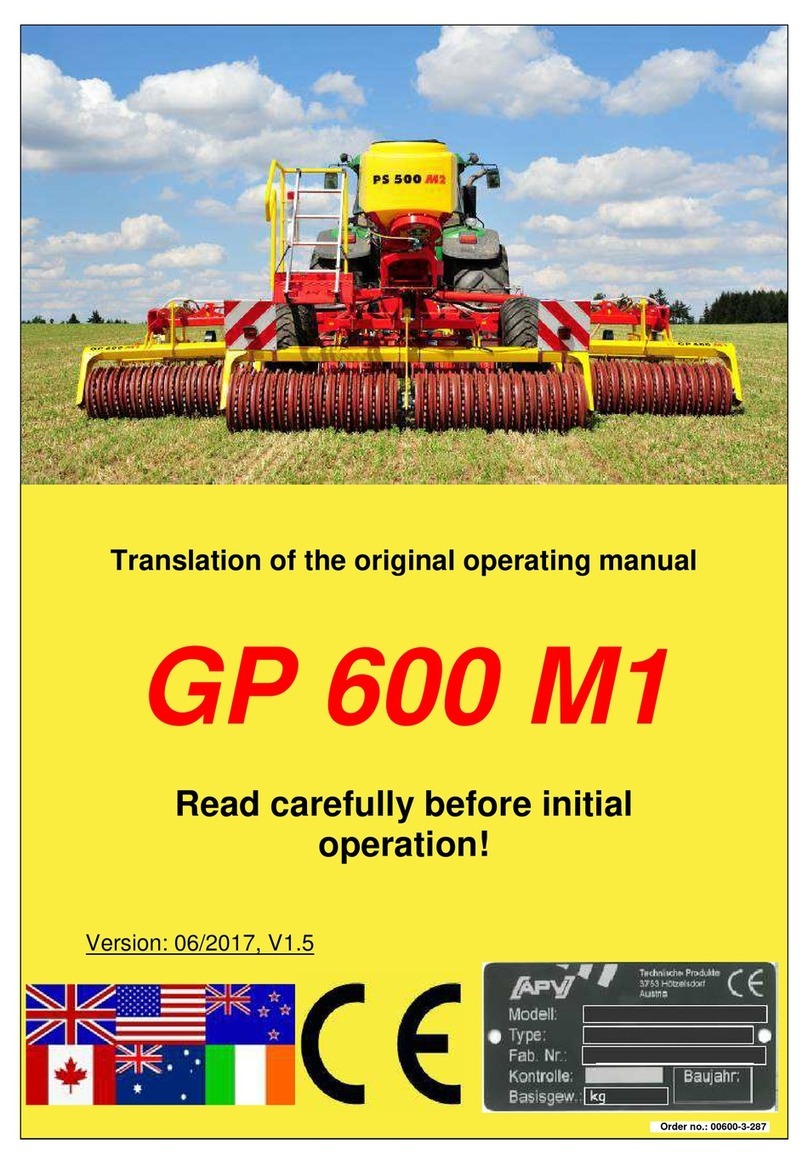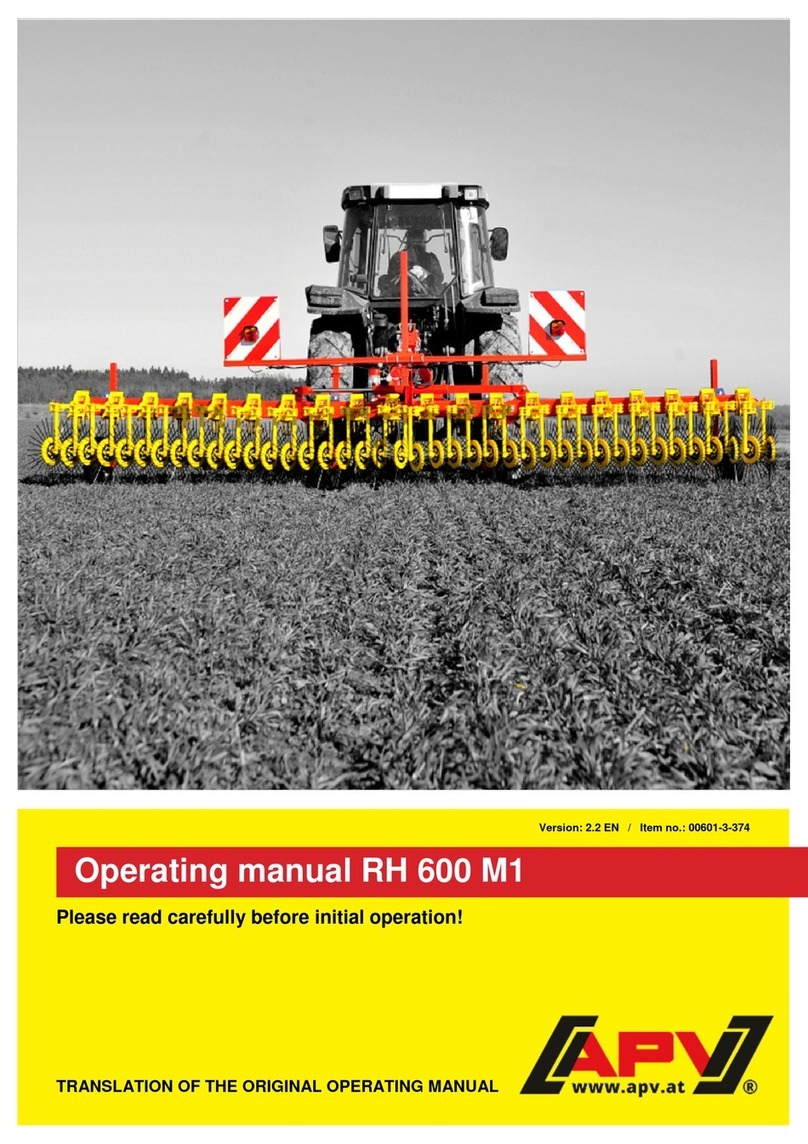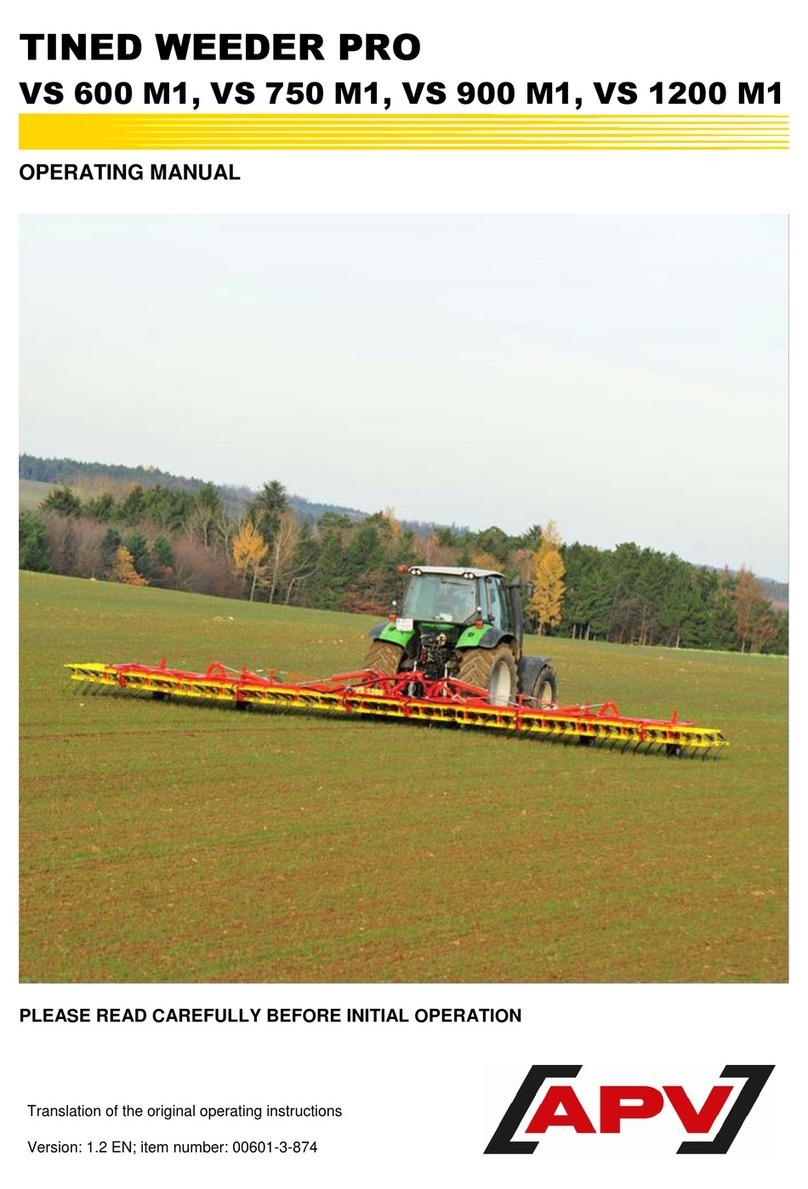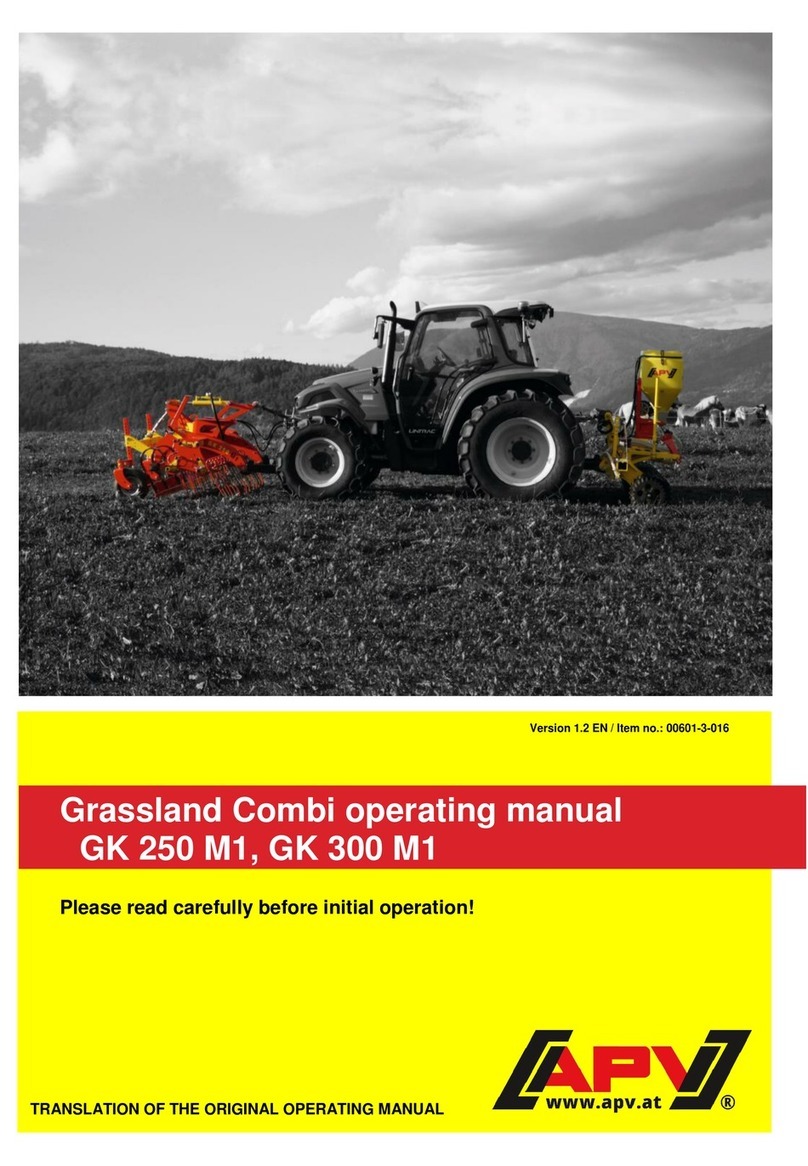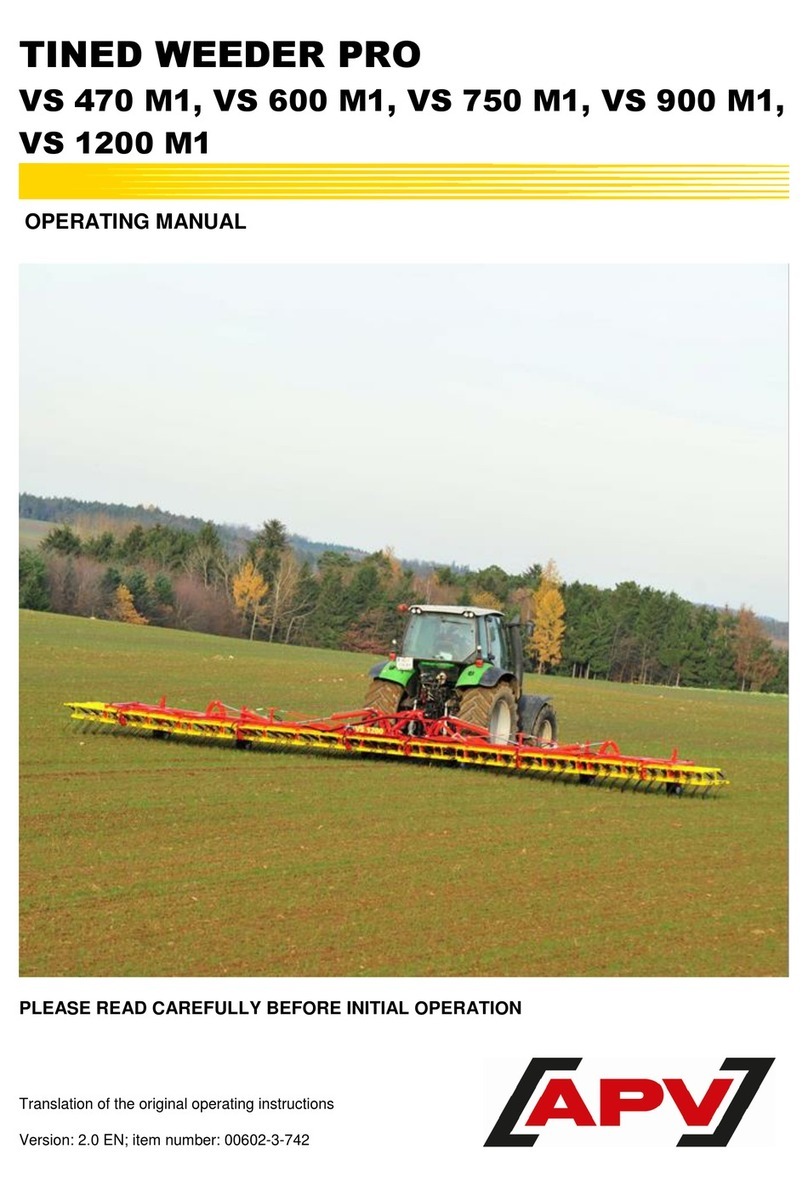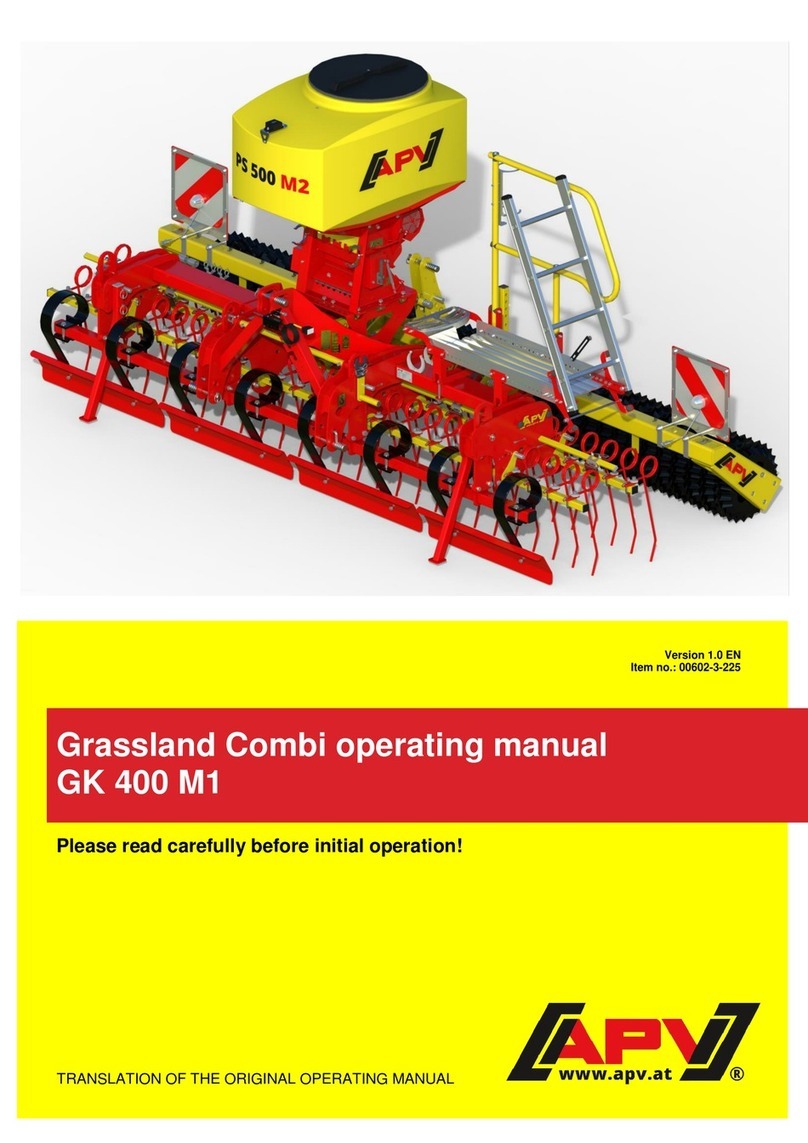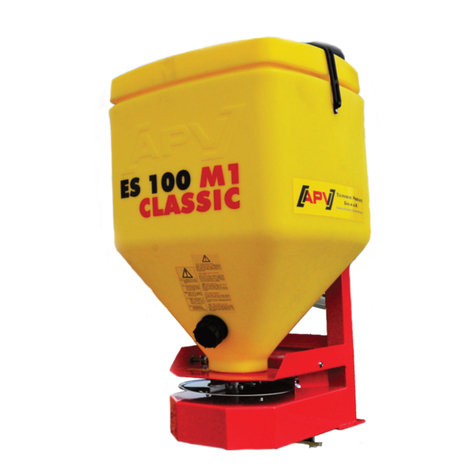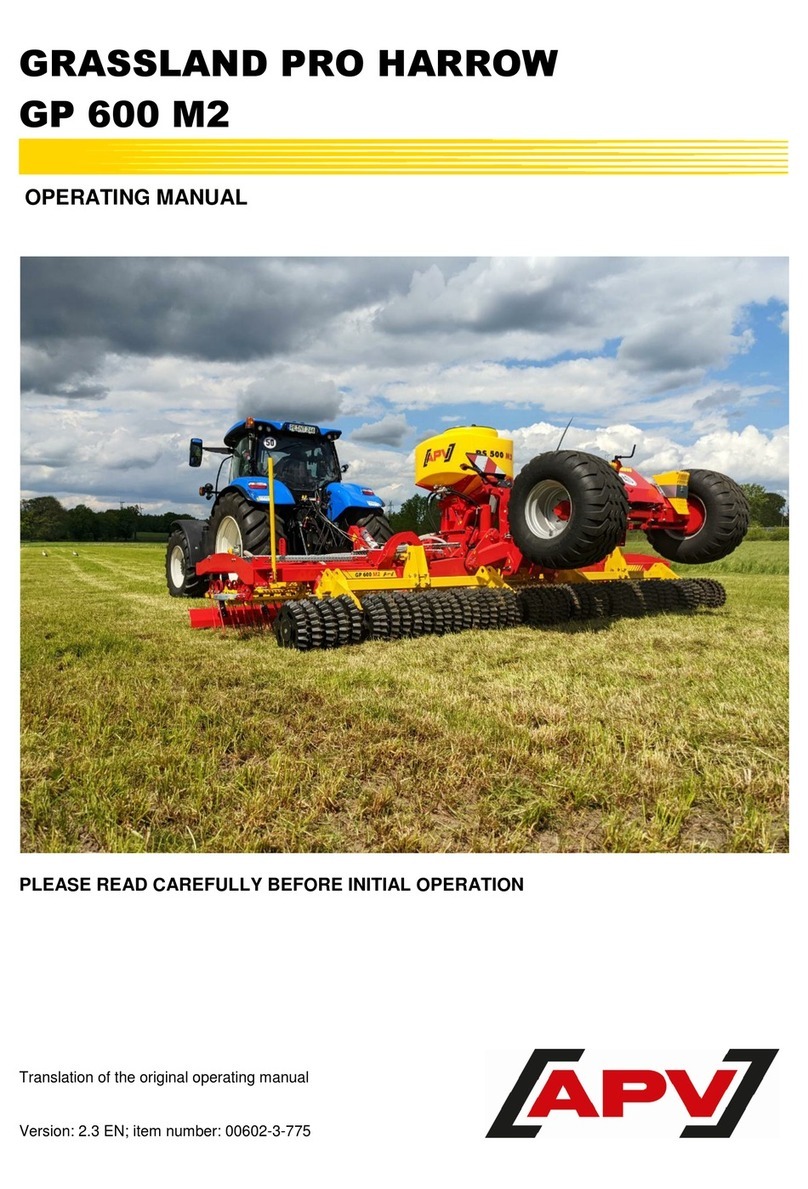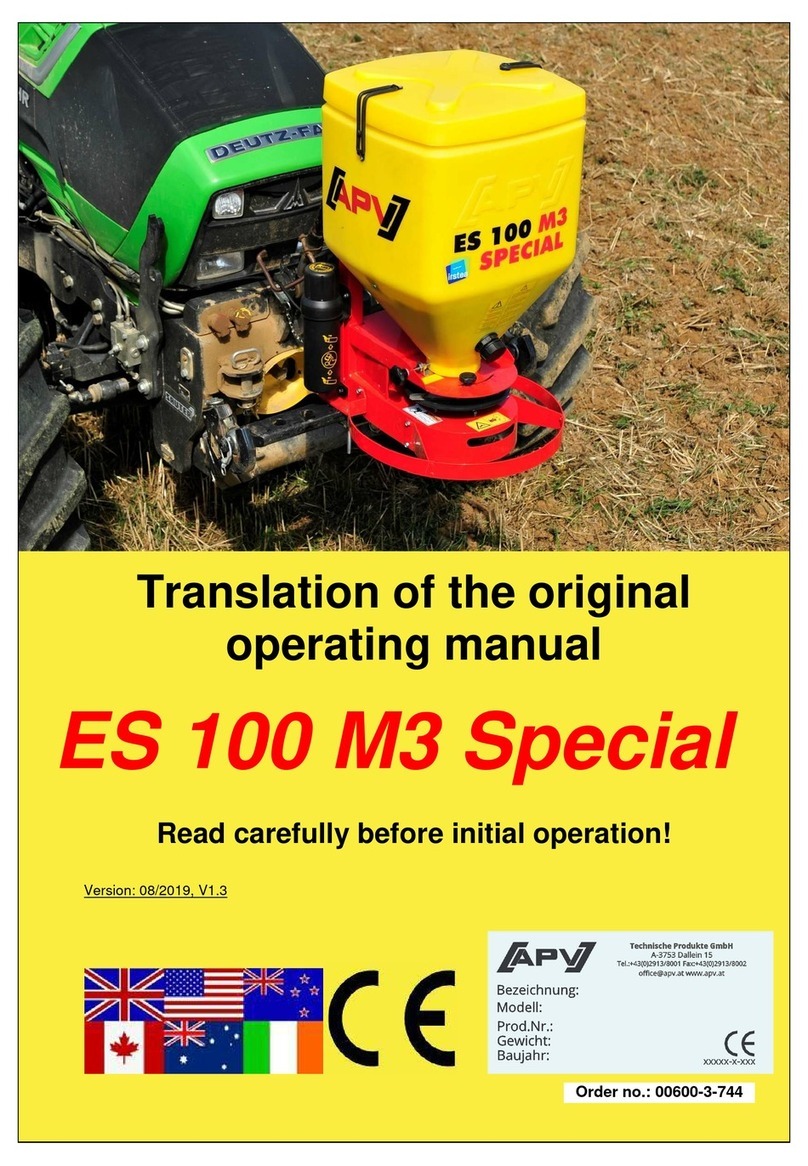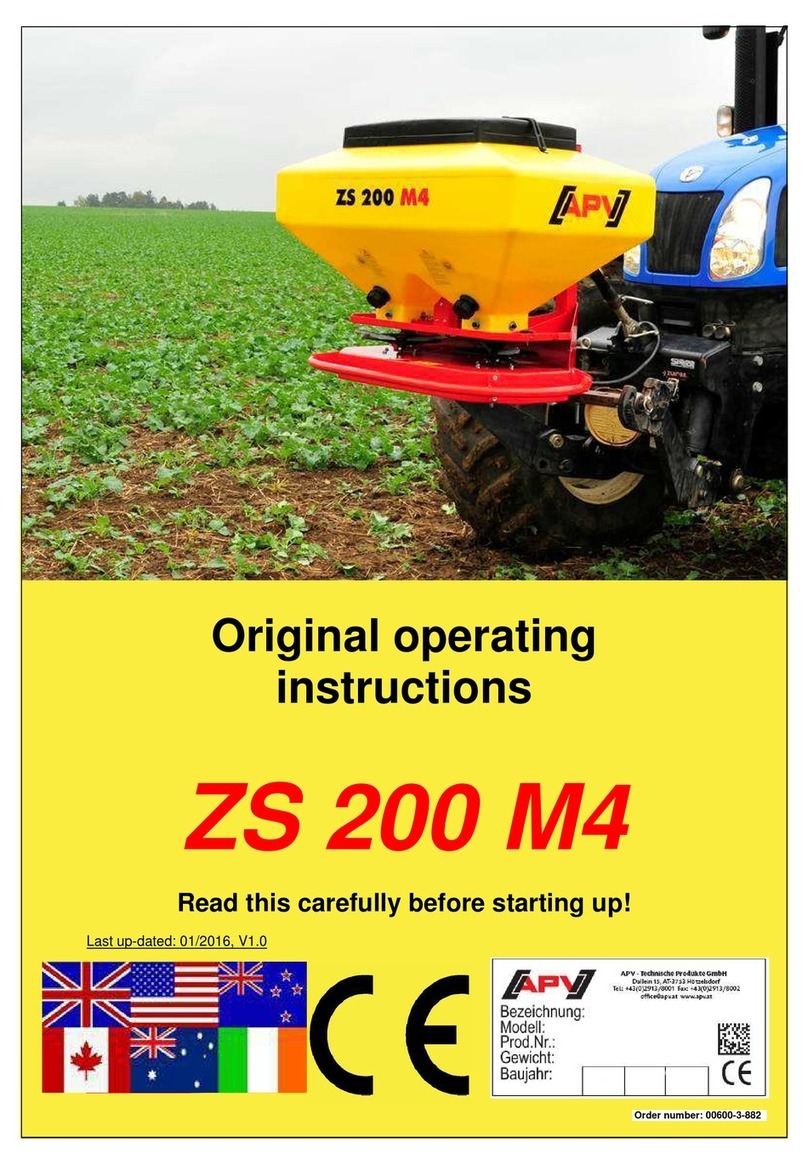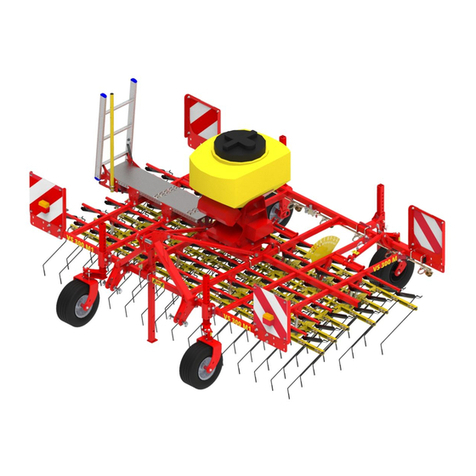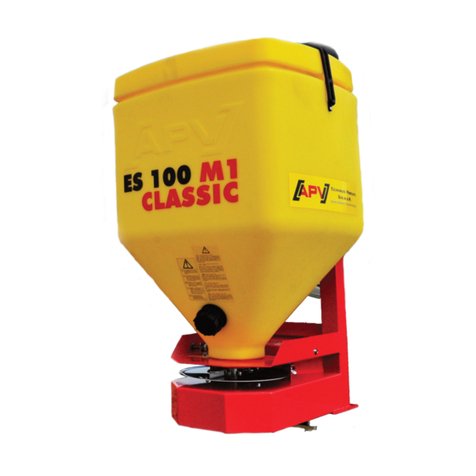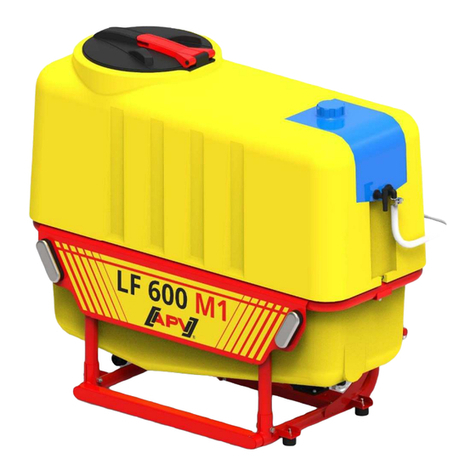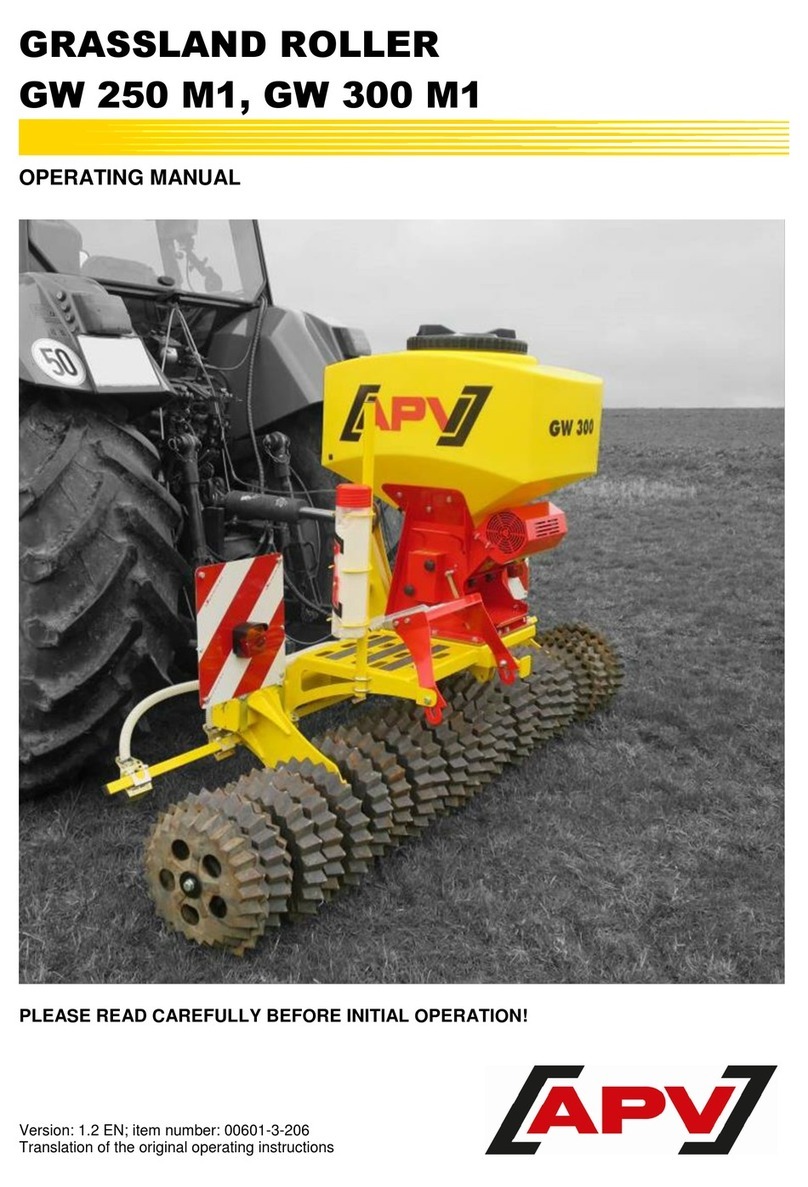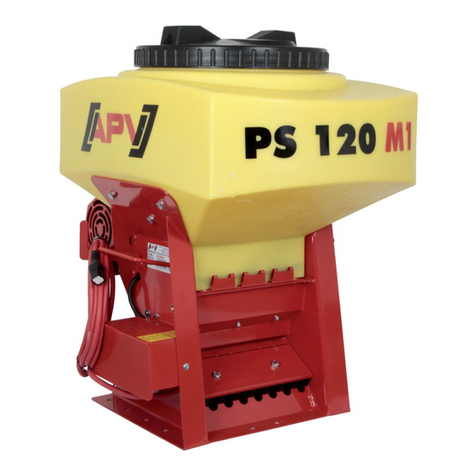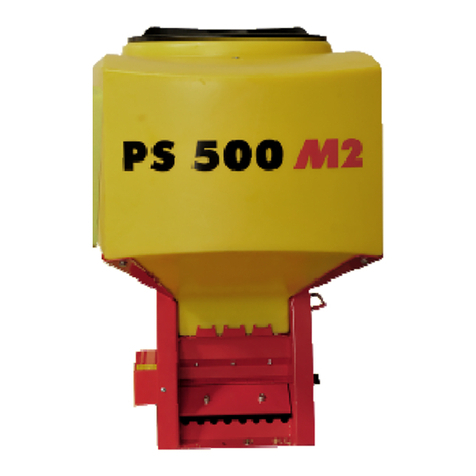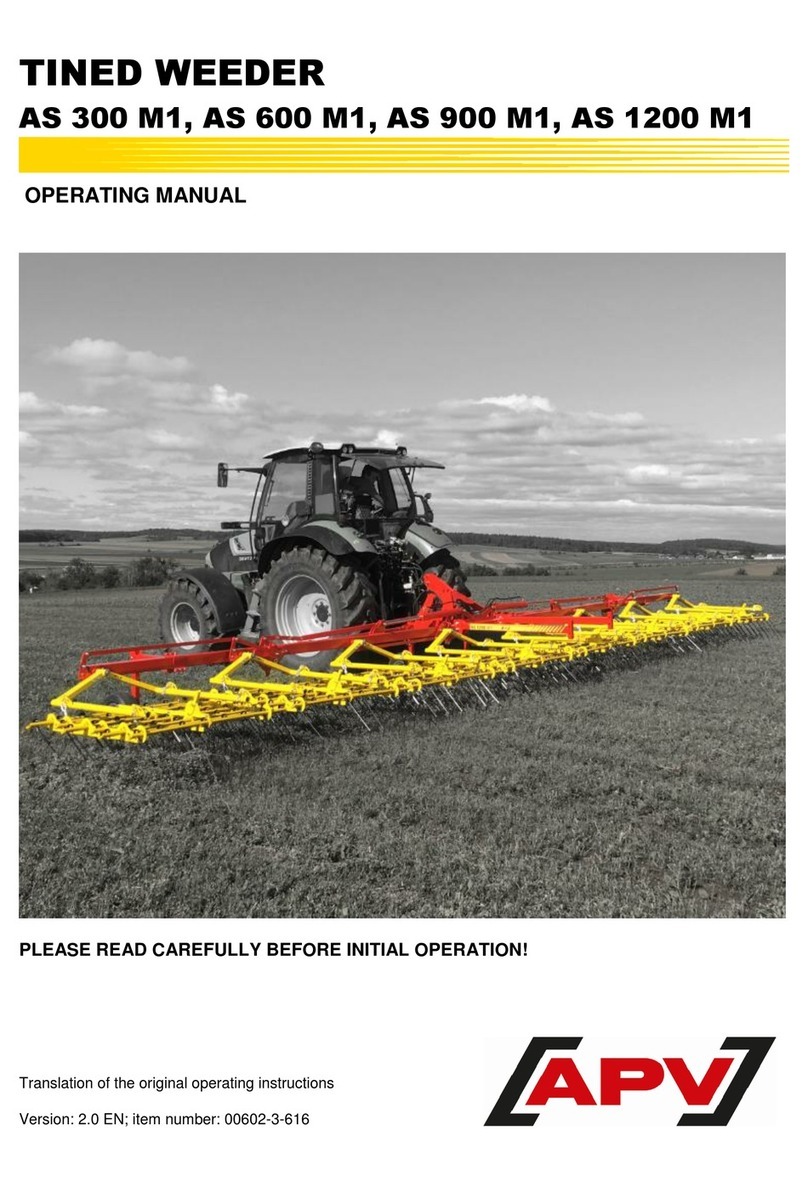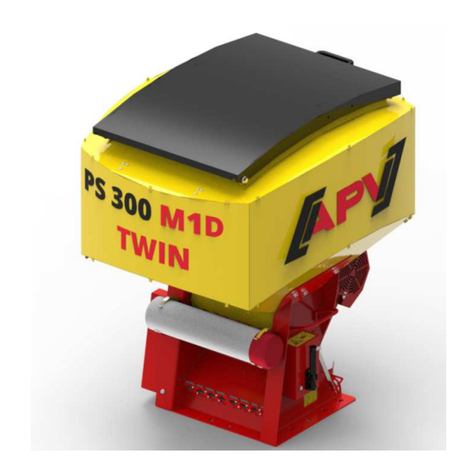
7
Each time before start-up check the implement and the tractor for road safety and operational safety
(e.g. defective parts, connections, fixations, hoses, guards, etc.)!
Before each use, the folding device and its securing devices (securing chain) must be checked for
proper function and effect.
Inspections must be performed before, during, and after use; care and maintenance of the implement
must be performed on a regular basis.
Comply with the generally valid safety regulations and accident prevention regulations of the
respective country!
This implement must only be used by persons who are informed of the danger zones and who are
familiar with the regulations for transport on public roads.
The warning and information signs affixed on the implement provide important instructions for safe
operation. Do not remove the warning and information signs under any circumstances. Comply with
the warning and information signs for your own safety!
Comply with the applicable country-specific road traffic regulations when using public roads!
Before beginning work, familiarize yourself with all the devices, activating elements, and their
functions. It is too late to do so during work implementation!
The user should wear close-fitting clothing! Avoid wearing loose clothing!
Keep the implements clean to prevent a fire hazard!
Check your immediate surroundings (check for children!) before start-up! Ensure sufficient visibility!
Carrying passengers while working and transporting them on the implement are prohibited!
Climbing onto the implement is only allowed if a platform kit is installed.
When using the platform kit, ensure that the implement is at a standstill, that it is also unfolded, and
lowered onto the ground.
Transporting work materials on the implement is prohibited!
Properly hitch the implement and fasten only to the prescribed fixtures!
Special care is required when coupling implements onto the tractor or uncoupling them from the
tractor!
When mounting the implement, the operator must particularly proceed in compliance with the tractor
requirementsas stipulated in the operating manual, andthe operator must ensurethat the connections
are properly established as specified in the operating manual.
Bring the support devices into their respective positions when mounting and dismounting the
implement (stability)!
Always install the weights properly at their designated fastening points!
Pay attention to the permissible axle load, total weight, and transport dimensions!
Check and install transport equipment, such as lighting, warning devices, and any protective devices!
Release parts for fast couplers must be freely suspended, and they must not release on their own in
the low position!
Never leave the driver's platform while while implement and tractor are in motion!
Handling, steering, and braking capability are also affected by mounted or attached implements and
ballast weights. Consequently, ensure that there is adequate steering and braking capability!
Take into account thewide load and/orthe implement's oscillating mass when turning! Attention tractor
curve!
Only operate the device when all protective devices are installed and in the protective position!
Do not position yourself in the work area!
Do not position yourself in the implements turning and swivel range!
Hydraulic folding frames must only be activated if no one is in the swivel range.
There are crushing and shearing points on power-operated parts (e.g. hydraulically-operated parts)!
Always ensure that your have a secure, safe stance when using implements with manual folding!
For high-speed implements with ground-drive tools –the oscillating mass that continues running
poses a hazard after lifting-out! Only approach implement after it has come to a complete standstill!
Before exiting the tractor, park the implement on the ground, turn off the engine and remove the
ignition key!
Do not allow anyone to enter the area between the tractor and implement without securing the vehicle
from rolling off via the parking brake and/or the wheel chocks!

